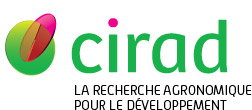Bastola Anil K., Rodriguez Nadia, Behl Marc, Soffiatti Patricia, Rowe Nick P., Lendlein Andreas. 2021. Cactus-inspired design principles for soft robotics based on 3D printed hydrogel-elastomer systems. Materials and Design, 202:109515, 12 p.
|
Version publiée
- Anglais
Sous licence  . .
614326.pdf Télécharger (4MB) | Prévisualisation |
Quartile : Q1, Sujet : MATERIALS SCIENCE, MULTIDISCIPLINARY
Résumé : Plants have evolved many capabilities to anchor, position their stems and leaves favourably, and adapt themselves to different environmental conditions by virtue of growing. Selenicereus setaceus is a cactus and is an impressive example of a climbing plant found mostly in the Atlantic forest formations of southern Brazil. This cactus displays striking changes in stem geometry along different stages of growth: older parts are circular while the younger parts are star-like in shape. Such a transformation in shape optimizes its flexural rigidity and allows the cactus to search in three-dimensionally complex environments. Its organisation offers novel schemes for the design of plant-inspired soft robotic systems. In this paper, we have created multi-material systems for soft robotics that display controlled movements as well as mimicking the cactus stem geometries from star-like to circular. The unique star-shaped geometry is 3D printed using a soft elastomer and hydrogel is used as an actuating component. Through anisotropic swelling, the hydrogel-elastomer system adjusts its configuration and shows a controlled movement. Furthermore, the isotropic swelling of the hydrogel of the artificial cactus multi-material system result in the change in shape from star-like to circular as the cactus does naturally in the tropical forest.
Mots-clés Agrovoc : adaptation, facteur du milieu, propriété physicochimique, élastomère, plantation forestière, croissance, changement climatique, propriété mécanique, tige
Mots-clés géographiques Agrovoc : Brésil
Mots-clés libres : Cactus-inspired, Hydrogel-elastomer, Multi-material, 3D printing, Soft-robotics
Agences de financement européennes : European Commission
Programme de financement européen : H2020
Projets sur financement : (EU) Towards a new generation of plant-inspired growing artefacts
Auteurs et affiliations
- Bastola Anil K., BCRT (DEU)
- Rodriguez Nadia, BCRT (DEU)
- Behl Marc, BCRT (DEU)
- Soffiatti Patricia, CIRAD-BIOS-UMR AMAP (FRA)
- Rowe Nick P., Université de Montpellier (FRA)
- Lendlein Andreas, BCRT (DEU) - auteur correspondant
Source : Cirad-Agritrop (https://agritrop.cirad.fr/614326/)
[ Page générée et mise en cache le 2025-09-21 ]




